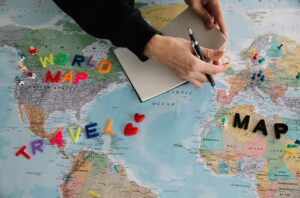Welcome to my Travel Blog!
Hello there, fellow travelers! I’m excited to share with you my thoughts on a topic that is close to my heart – accessibility for all types of visitors. As someone who loves to explore new places and has experienced the challenges of traveling with limited mobility, I believe it’s important to address this issue and find ways to make travel more inclusive for everyone.
Why Accessibility Matters
Before we dive into how we can improve accessibility for all types of visitors, let’s first understand why it matters. We often take for granted the ability to move around freely and explore different destinations. But for those with mobility impairments, traveling can be a daunting task. From inaccessible transportation and accommodations to limited access to tourist attractions, the lack of accessibility can greatly impact the travel experience for individuals with disabilities.
Furthermore, as the world becomes more aware and accepting of diversity, it’s crucial that we also make our travel destinations and experiences more inclusive. After all, everyone deserves the opportunity to explore and discover the beauty of our world.
Improving Accessibility in Transportation
One of the first steps towards making travel more accessible is by improving transportation options. Many individuals with disabilities rely on public transportation, and it’s essential for these systems to be accessible to them. In recent years, there have been efforts to make public transportation more inclusive, such as installing wheelchair ramps and lifts on buses and trains. However, there is still room for improvement.
Additionally, it’s important for airports to have accessible facilities and services for travelers with disabilities. From accessible restrooms and elevators to trained staff who can assist with boarding and deplaning, these small changes can greatly improve the travel experience for individuals with disabilities.
Accessible Accommodations
Another crucial aspect of travel is finding accessible accommodations. While some hotels and resorts have made strides in providing accessible rooms and facilities, there is still a lack of options in many destinations. This can be especially challenging for individuals who use wheelchairs or have other mobility impairments.
Thankfully, there are now online resources like AccessibleGO and Booking.com’s Accessibility Filters that can help travelers find suitable accommodations. These websites provide information on the accessibility features of different hotels and allow users to filter their search based on their specific needs.
Inclusive Tourist Attractions
When planning a trip, most of us look forward to exploring popular tourist attractions. However, many of these attractions are not designed to be accessible for individuals with disabilities. This can be a major barrier for those who want to experience and learn about different cultures and landmarks.
To improve accessibility in tourist attractions, it’s important for governments and private companies to work together to make necessary changes. This can include building ramps and elevators, providing audio guides for individuals with visual impairments, and training staff on how to assist visitors with disabilities.
Empowering and Educating Travel Industry Staff
Another crucial aspect of improving accessibility in travel is by empowering and educating those who work in the industry. From tour guides and hotel staff to transportation providers, it’s essential for them to understand the needs of travelers with disabilities and how to best assist them.
There are organizations like Open World Travelers and ADA.gov that offer training and resources for the travel industry to become more inclusive and accessible. By educating and raising awareness, we can create a more welcoming and accommodating environment for all types of visitors.
Creating an Inclusive Mindset
Lastly, we all have a part to play in making travel more inclusive for individuals with disabilities. As travelers, we can educate ourselves on the needs and challenges of those with disabilities and be more mindful of our actions. This can include being aware of accessible routes and facilities, offering assistance when needed, and using inclusive language.
Additionally, governments and businesses can also play a role by implementing policies and regulations that prioritize accessibility and inclusivity. By creating an inclusive mindset, we can work towards a world where everyone can travel and explore without limitations.
Final Thoughts
As I come to the end of this post, I hope that I have sparked some thoughts on how we can improve accessibility for all types of visitors. From improving transportation and accommodations to creating an inclusive mindset, every effort counts in making travel more inclusive for individuals with disabilities.
Let’s continue to advocate for and support accessible travel, because everyone deserves the opportunity to experience the wonders of our world. So, the next time you plan a trip, remember




